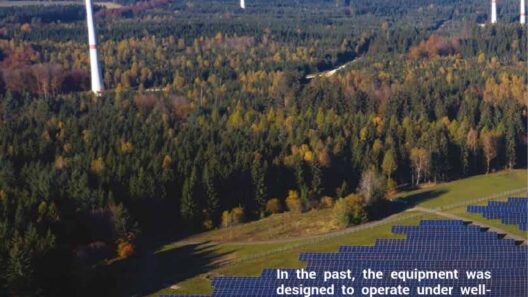The law of energy conservation is a fundamental principle in physics, stating that energy cannot be created or destroyed; it can only be transformed from one form to another. This principle has profound implications not only within the realms of science and engineering but also for environmental sustainability and conservation efforts. To fully comprehend what the law of energy conservation entails, it is essential to explore various facets of energy—its types, transformations, and the broader implications for our society and environment.
Energy exists in several forms, including kinetic, potential, thermal, chemical, and nuclear energy, among others. Kinetic energy pertains to the motion of objects, while potential energy is stored energy based on position or configuration. Thermal energy is associated with temperature, and chemical energy is contained within the bonds of chemical compounds. Nuclear energy, one of the most powerful forms of energy, is released during nuclear reactions. The ability to transform one type of energy into another underlies countless natural processes and human-designed systems, from the simplest machines to intricate ecosystems and advanced technological innovations.
In practical terms, the law of energy conservation illustrates how energy transitions occur in everyday phenomena. For instance, consider a pendulum. As it swings, potential energy at the highest points transforms into kinetic energy at the lowest point and vice versa. Similarly, in electrical circuits, electrical energy is converted to light and heat energy in devices such as light bulbs. Understanding these transitions sheds light on our energy consumption patterns and guides more efficient design and use of technology.
The significance of the law extends far beyond individual instances. On a macro level, conservation of energy dictates the efficiency of entire systems, be they industrial processes, home heating systems, or the energy grid that powers entire cities. Energy efficiency measures, such as those seen in Energy Star-rated appliances or advanced insulation materials, are predicated on the principles of energy conservation. By optimizing energy use, we minimize wastage and reduce the environmental impact of energy production, which often involves the combustion of fossil fuels.
The transformation and conservation of energy have implications for renewable energy sources, which have gained prominence in the quest for sustainable development. Solar panels, wind turbines, and hydroelectric plants are designed to harness natural energy flows, converting them into usable forms of electricity. This transition is crucial as it addresses the pressing challenge of climate change, resulting from anthropogenic greenhouse gas emissions. Utilizing renewable energy reduces reliance on finite fossil fuel resources, thereby aligning with the principles of energy conservation.
Moreover, the law of energy conservation serves as a powerful reminder of the interconnectedness of energy systems, ecosystems, and human society. Every energy transformation relates to environmental impacts, such as carbon footprints, resource depletion, and biodiversity loss. Energy production and consumption patterns directly influence ecosystem health, demonstrating the necessity of integrating conservation principles into policy-making and urban planning. For instance, cities that prioritize green spaces, efficient public transport, and renewable energy sources create a synergistic environment, promoting public health while conserving energy resources.
In educational contexts, the law of energy conservation can foster a deeper understanding of scientific principles while encouraging responsible citizenship. Curricula that include modules on energy transformations, sustainability, and environmental stewardship empower students to appreciate the tangible effects of their actions. By exploring these concepts, young individuals can contribute to a society that prides itself on conservation ethics, innovation, and accountability.
Despite its scientific foundation, the implications of the law of energy conservation can be obscured by misinformation and resistance to change. The transition toward more sustainable energy practices requires overcoming numerous barriers, including political inertia, economic considerations, and societal reluctance. Public campaigns highlighting the benefits of energy conservation, coupled with evidence-based policies, can help shift perceptions and encourage widespread adoption of sustainable practices.
Furthermore, interdisciplinary collaboration is essential to tackle the challenges posed by energy conservation. Cross-sector partnerships between academia, industry, and governmental agencies can accelerate innovation in energy technologies, resulting in breakthroughs that enhance energy efficiency and promote renewable energy adoption. Research institutions can drive advancements in energy storage, grid integration, and smart technologies that optimize energy use without sacrificing convenience or comfort.
To encapsulate, the law of energy conservation is a nuanced cornerstone of physics with multifaceted implications across various domains. It underscores the necessity of understanding how energy flows through systems and how our actions influence the environment. As society grapples with the dual challenges of energy demands and climate change, the principles inherent in energy conservation provide a framework for developing sustainable solutions that can support current and future generations.
Ultimately, the path forward necessitates a commitment from individuals, communities, and governments alike to recognize the importance of energy conservation not only as a scientific principle but as a moral imperative. The actions taken today, guided by the law of energy conservation, will resonate through the generations, shaping a sustainable future grounded in respect for our planet and its finite resources.








